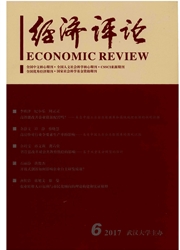

 中文摘要:
中文摘要:
本文应用劳动时间Tobit模型和健康模型的联立最大似然估计方法,基于中国健康和营养调查(CHNS)中农村老年人的调查数据,研究中国农村老年人"无休止劳动"问题。结果发现,对于客观健康BMI指标(过瘦和过胖),在1990年代和2000年代,年龄通过健康途径对老年人实际劳动时间的影响分别占年龄对实际劳动时间总影响的25%和79%;相对于1990年代,中国农村老年人在新世纪初"无休止劳动"的程度有所减弱。从老年人主观自评健康指标来看,年龄影响劳动时间的健康渠道效应占其总影响的比例不到2%,农村老年人存在较大程度的"无休止劳动"。中国农村老年人的劳动和福利状况需进一步得到关注。
 英文摘要:
英文摘要:
Based on the CHNS survey data,this paper applies the full maximum likelihood estimation of the jointed Tobit model and health model to consider the issue on "Ceaseless Toil".Our findings show that,for the objective health indicators such as low BMI and high BMI,the effects of age on hours worked by the rural eldlery through health in 1990s and 2000s are,respectively,25% and 79% of the total effects of aging on the actual hours worked,implying that the degree of "Ceaseless Toil" has decreased in 2000s relative to 1990s.However,for the subjective self-evaluated health status indicator,this ratio is only close to 2%,implying that the degree of "Ceaseless Toil" for the rural elderly is quite significant.The labor status and well-being of the elderly in Rural China should further be garnered much more attention.
 同期刊论文项目
同期刊论文项目
 同项目期刊论文
同项目期刊论文
 A Comparative Study on the Health Care and Medical Service Consumption of Urban and Rural Households
A Comparative Study on the Health Care and Medical Service Consumption of Urban and Rural Households 期刊信息
期刊信息
